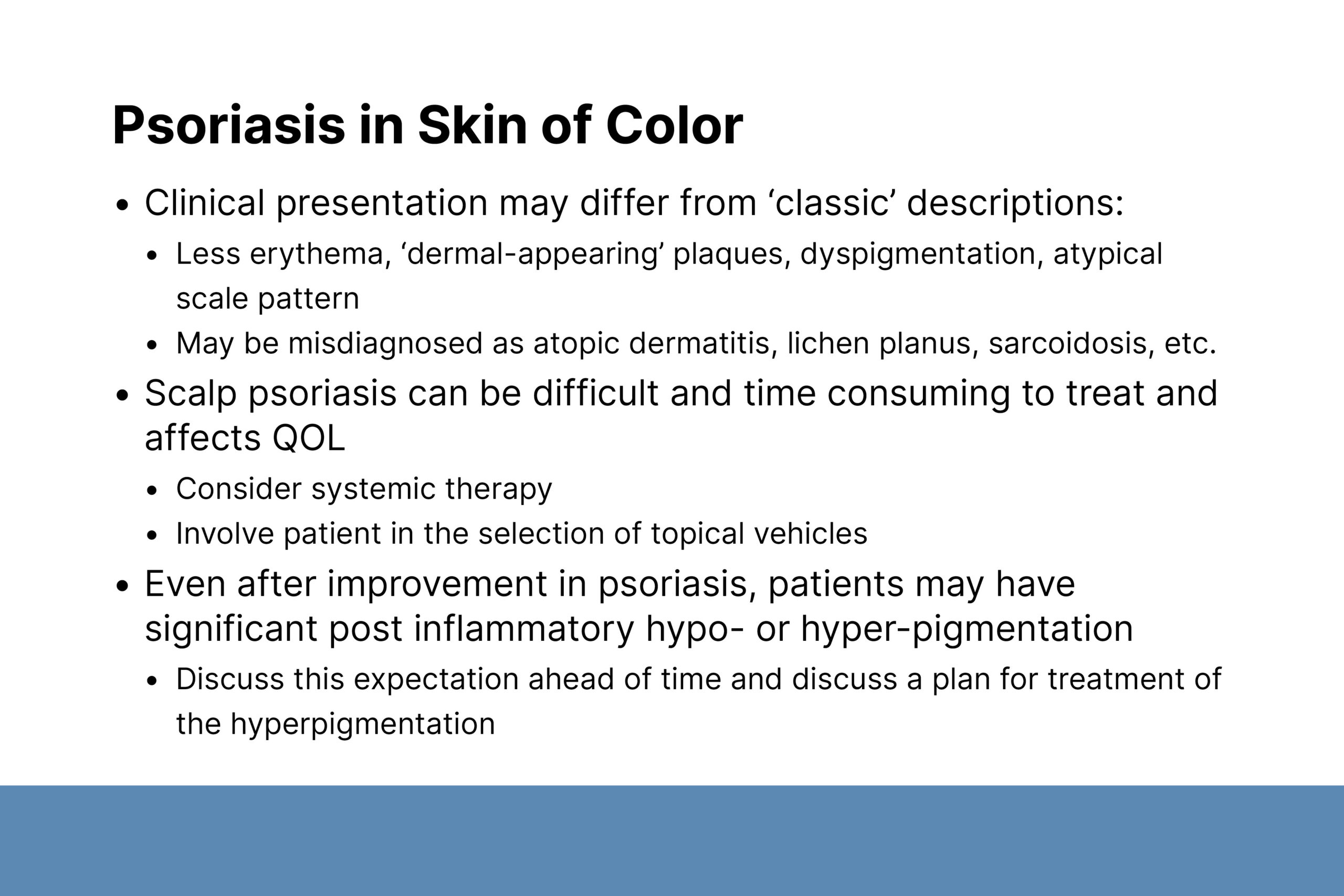How I Do It: Psoriasis in Skin of Color
Classic as well as non-classic clinical presentations of psoriasis are common among patients with skin of color. Diagnosis and treatment should reflect this.
Dr. Ginette Okoye, Professor and Chair, Department of Dermatology, Howard University College of Medicine
October 2024
Dr. Ginette Okoye presented information about the clinical presentation and treatment of psoriasis in patients with skin of color.
First, Dr. Okoye described the clinical presentation of psoriasis in patients with skin of color. Classic psoriasis, characterized by well-demarcated erythematous (red) plaques and micaceous (silver-colored) scales, can occur in these patients. Non-classic presentations of psoriasis also are common and include:
- Less redness; may appear bright red, purple, violaceous, or dark brown
- Thicker, “dermal-appearing” plaques with minimal scale
- Absence or atypical appearance of scale
- More post-inflammatory dyspigmentation
Dr. Okoye emphasized the need to counsel patients of color that post-inflammatory dyspigmentation can last for weeks or months, especially on the lower legs. Even if a patient’s skin disease shows clinical improvement, they may not feel satisfied due to hyperpigmentation.
Second, Dr. Okoye shared two patient cases demonstrating the diagnosis and treatment of psoriasis in patients of color.
Case #1
A 27-year-old Salvadoran male with asymptomatic pink, annular dermal plaques on the shins for six months. Differential diagnosis included sarcoidosis, granuloma annulare, cutaneous lymphoma, and mycobacterial infection. Biopsy showed psoriasis. The patient began with topical steroids and progressed to narrow-band UVB phototherapy two to three times per week. He cleared after six months with residual post-inflammatory hyperpigmentation. For management, he continued topical steroids and phototherapy as needed.
Case #2
A 35-year-old female with mild psoriasis managed with topical steroids presented with worsening scalp pruritis and alopecia. She was diagnosed previously with seborrheic dermatitis and prescribed ketoconazole shampoo. She reported not using the shampoo because it caused hair dryness and breakage. Clobetasol ointment and calcipotriene/betamethasone diproprionate scalp solution did not provide sufficient relief. The patient started on adalimumab and remained clear six months later with some remaining scarring alopecia.
Dr. Okoye shared considerations for managing scalp psoriasis in Black patients and any patients with curly hair. People with curly hair tend to wash their hair every one to two weeks because it becomes dry or brittle if shampooed frequently. This limits the effectiveness of medicated shampoos. Dr. Okoye shared tips for medicated shampoo use in patients with curly hair. She considers systemic therapy for patients with scalp psoriasis if it negatively affects their quality of life.
Finally, Dr. Okoye emphasized the importance of discussing hair grooming and topical steroid vehicle preferences with patients. In general, patients with curly hair tend to prefer oil or ointment; patients with straight hair tend to prefer solution. However, she cautioned against making assumptions about patient preferences.

Register today for the 2025 DF Clinical Symposium.

